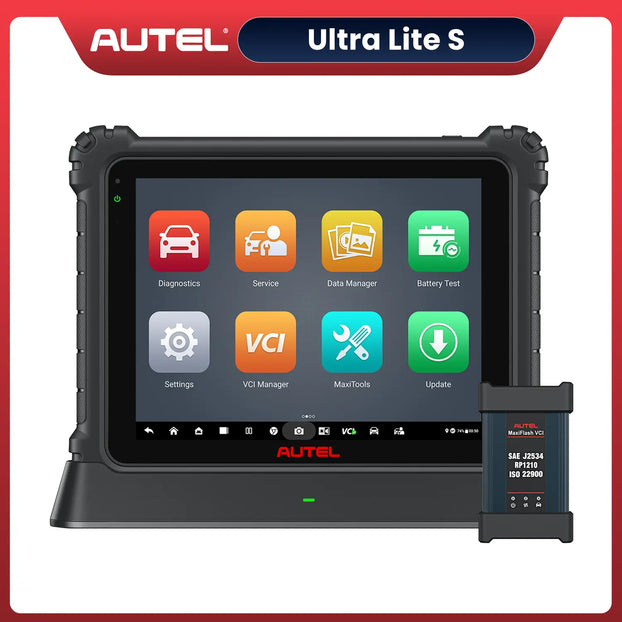Faster Delivery in 3-5 Days
Faster Delivery in 3-5 Days

In modern automobiles, electronic control modules have become an indispensable part of vehicle operation. Among them, the Body Control Module (BCM) is a crucial central unit responsible for coordinating and managing various electronic systems within the vehicle body.
This article will introduce the role of the BCM, its main control functions, common fault symptoms, and how to use an Autel scanner for diagnosis and troubleshooting.

Body Control Module in Modern Vehicles
The Body Control Module (BCM) is an electronic control unit (ECU) primarily responsible for managing the electrical systems within the vehicle body, such as lighting, air conditioning, power windows, and door locks. It is typically located behind the dashboard or under the seats, serving as the central hub of the vehicle's electronic systems.
It receives input signals from sensors and sends commands to actuators to control their operation. The BCM is a microprocessor-based unit. Its internal software is usually programmed at the factory, but in some cases, technicians can reprogram it.
The BCM communicates with other electronic control units (such as ECM, TCM, etc.) via a Controller Area Network (CAN) or Local Interconnect Network (LIN) to coordinate the operation of multiple systems. For example, the BCM can communicate with the Engine Control Module (ECM) based on the load of in-vehicle accessories to adjust the engine idle speed.

Body Control Module (BCM)
As the central control unit, the BCM manages numerous electrical systems within the vehicle. Its main functions include:
Through these functions, the BCM ensures the efficient and coordinated operation of the vehicle's electrical systems, making it an indispensable module in modern automotive electronics.

Controlling the windshield wipers is one of the functions of the BCM
While the BCM is a powerful system, it is also prone to failure. The main causes include:
When the BCM malfunctions, the vehicle may exhibit several abnormal behaviors:
BCM malfunctions may cause the vehicle to fail to start or stall after starting, fail to recognize the key transponder, or fail to send a start signal to the ignition switch.
Using an OBD-II scanner, fault codes (DTCs) can be read from the BCM to locate the problem, such as:
By reading the fault codes, technicians can quickly find the source of the fault and troubleshoot it.

BCM-Related Fault Codes on Autel scanner
Autel scanners (such as the MaxiSys or MK900 series) can efficiently diagnose BCM problems. The steps are as follows:
The Autel scanner can also program, match, and reset the BCM, providing a complete solution for complex faults.
The Autel Ultra Lite S is an auto diagnostic tool based on the Android 7.0 operating system and an octa-core processor, boasting powerful information processing capabilities. Featuring a large 12.9-inch screen and 256GB of internal memory, the Ultra Lite S is designed to meet user needs.
Furthermore, it supports OE-level full system diagnostics and topology module mapping, helping maintenance personnel quickly locate faults and improve repair efficiency.

$2,849.00
[2-Year Free Update] All System Diagnostic | Motor TruSpeed Repair | New Diagnostics Topology 2.0 | ECU Programming & Coding | 3000+ Active Test | 36+ Reset Service | Upgrade Of Maxisys MS919/ Elite II Pro
The Autel MaxiCOM MK906S Pro II-TS is a 2025 premium diagnostic tool with an 8-inch HD touchscreen, octa-core processor, and 128GB storage. It offers full-system diagnostics, TPMS programming, bi-directional control, ECU coding, and advanced service resets (oil, EPB, DPF). Supports 21 languages and hidden function activation.

$1449.00
Autel MaxiCOM MK906S Pro II TS | 2025 TPMS Functions ECU Coding | Bi-directional Control | 36+ Reset Services | Upgrade Ver. OF MS906 PRO-TS/ MS906 PRO/ MS906TS/ MS906BT
View MoreCommon handling methods include:
⚠️ Because the BCM involves multiple critical vehicle systems, complex faults should be handled by a professional technician.
The BCM is a crucial central control module in modern automobiles, responsible for managing lighting, door locks, power windows, wipers, and many other vehicle electronic functions. BCM faults can cause multiple system anomalies, such as lights, battery drain, and difficulty starting.
With the help of the Autel scanner, BCM fault codes can be quickly read, real-time data can be monitored, and functional tests can be performed, providing a reliable basis for troubleshooting and ensuring the safe and stable operation of the vehicle's electrical system.